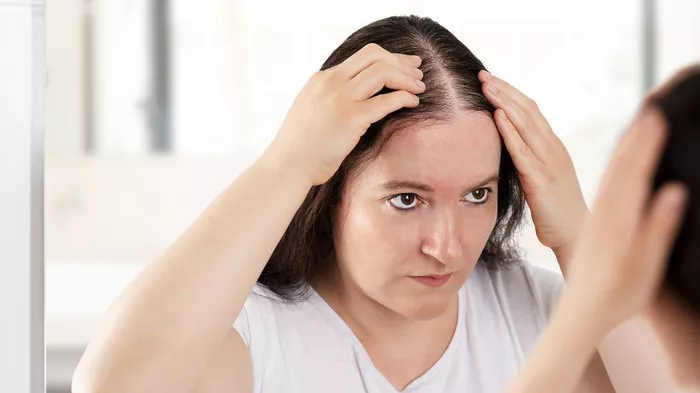Hair thinning is a common concern for many individuals, impacting both men and women as they age. While it’s widely acknowledged that thinning hair is a natural part of the aging process, there’s often uncertainty surrounding when exactly it begins. Understanding the factors contributing to hair thinning and the age at which it typically begins can help individuals take proactive steps to manage their hair health. In this comprehensive article, we delve into the science behind hair thinning, explore the age-related patterns, and provide practical insights for maintaining healthy hair throughout life.
The Biology of Hair Thinning: Unraveling the Mechanisms
Before delving into the age at which hair thinning commonly starts, it’s essential to grasp the biological processes that underlie this phenomenon. Hair thinning, often referred to as hair loss or alopecia, can occur due to various factors, including genetics, hormonal changes, nutritional deficiencies, and environmental influences.
At the root of hair thinning lies the hair follicle, a dynamic structure responsible for hair growth. Throughout life, hair follicles undergo cycles of growth (anagen phase), transition (catagen phase), and rest (telogen phase). Disruptions in this cycle can lead to hair thinning and eventual hair loss.
One of the primary contributors to hair thinning is genetics. Androgenetic alopecia, also known as male-pattern or female-pattern baldness, is the most common type of hair loss and is strongly influenced by genetic predisposition. In individuals with a family history of hair thinning, the process often begins earlier and progresses more rapidly.
Hormonal changes also play a significant role in hair thinning. Testosterone, a hormone present in both men and women, can be converted into dihydrotestosterone (DHT) by the enzyme 5-alpha reductase. DHT has been implicated in shrinking hair follicles in genetically predisposed individuals, leading to thinner, shorter hair strands.
Additionally, nutritional deficiencies, particularly of iron, zinc, biotin, and essential fatty acids, can compromise hair health and contribute to thinning. Environmental factors such as exposure to pollutants, harsh chemicals, and excessive heat styling can also damage the hair shaft and accelerate thinning.
Understanding these underlying mechanisms sets the stage for exploring the age-related patterns of hair thinning and when individuals may first notice its onset.
Age and Hair Thinning: What to Expect
While there is no one-size-fits-all answer to the age at which hair thinning begins, several general patterns can be observed based on both scientific research and anecdotal evidence.
Puberty and Early Adulthood: The Formative Years
Hair thinning typically doesn’t manifest during childhood or adolescence, as hair growth is robust during these developmental stages. However, as individuals transition into early adulthood, changes in hormones and lifestyle factors can influence hair health.
In some cases, individuals may experience mild thinning or shedding during their late teens or early twenties due to hormonal fluctuations or stress. However, this is often temporary and resolves with time and proper care.
Mid to Late Twenties: The Emergence of Signs
For many individuals, the first noticeable signs of hair thinning emerge during their mid to late twenties. This period coincides with the natural aging process and may also be influenced by genetic predisposition.
In men, male-pattern baldness typically begins with a receding hairline or thinning at the temples, gradually progressing to baldness at the crown. Women may notice widening part lines or a decrease in hair density, particularly around the crown area.
While hair thinning can be distressing, especially at a relatively young age, it’s essential to remember that early intervention and lifestyle modifications can help slow down its progression and preserve hair health.
Thirties and Forties: Progression and Adjustment
Hair thinning tends to progress gradually as individuals move through their thirties and forties. By this stage, noticeable thinning may be more pronounced, and individuals may seek out various treatments or interventions to address their concerns.
In addition to genetic factors, lifestyle choices such as diet, stress management, and hair care routines become increasingly important in maintaining healthy hair. Nutritional supplements, topical treatments, and professional interventions such as platelet-rich plasma (PRP) therapy or low-level laser therapy (LLLT) may be considered to support hair growth and thickness.
Fifties and Beyond: Navigating Change
As individuals enter their fifties and beyond, hair thinning may become more widespread, affecting larger areas of the scalp. Hormonal changes associated with menopause in women and declining testosterone levels in men can exacerbate hair thinning during this stage of life.
While it’s natural for hair density to decrease with age, proactive measures can still be taken to support overall hair health. Embracing hairstyles that complement thinner hair, practicing scalp massage to improve circulation, and maintaining a balanced diet rich in essential nutrients can all contribute to healthier, thicker-looking hair.
Conclusion
Hair thinning is a multifactorial process influenced by genetics, hormones, lifestyle factors, and aging. While there isn’t a specific age at which hair thinning universally begins, understanding the underlying mechanisms and age-related patterns can empower individuals to take proactive steps to maintain their hair health throughout life.
By adopting a holistic approach that encompasses proper nutrition, stress management, and targeted treatments, individuals can support hair growth, minimize thinning, and embrace their hair’s natural beauty at every stage of the aging process. Remember, while hair thinning may be inevitable to some extent, proactive care and acceptance of change can go a long way in preserving confidence and self-esteem.


